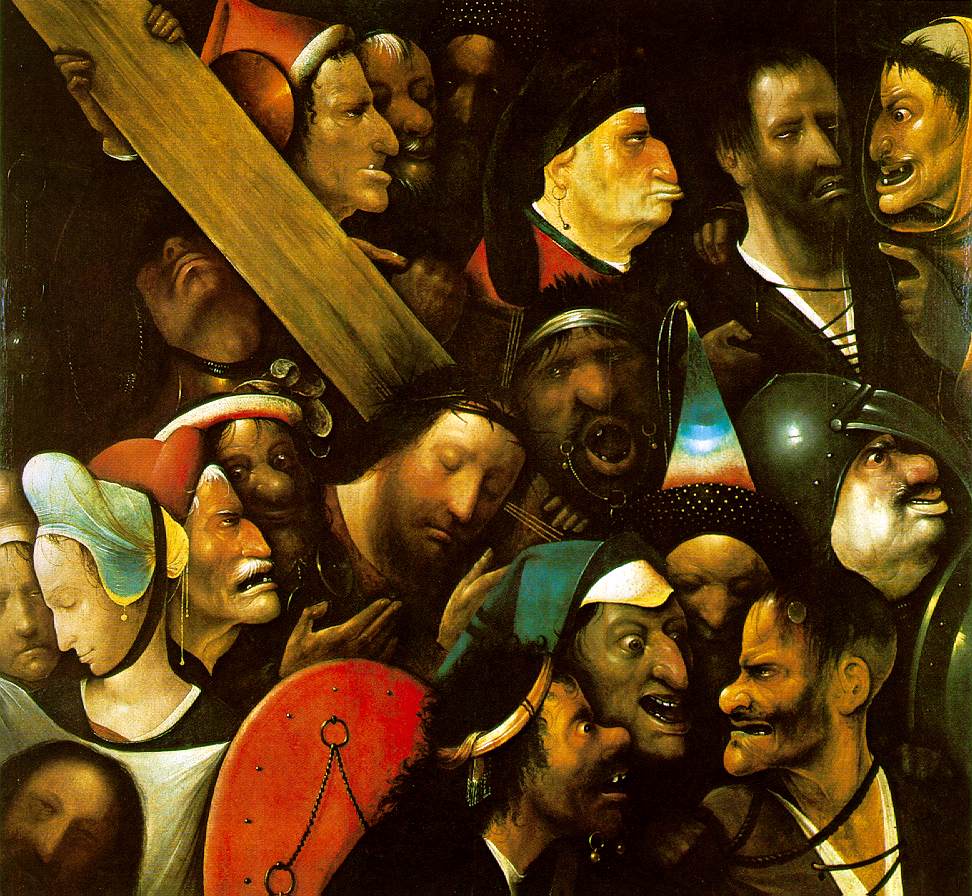Hieronymus Bosch(1450-1516)
Philip II, though, collected his works more for education than for entertainment. A Dutch art historian in the early 17th century described Bosch’s paintings chiefly as ‘wondrous and strange fantasies… often less pleasant than gruesome to look at’. In the 20th century, however, scholars decided that Bosch’s art has a more profound significance, and there have been many attempts to explain its origins and meaning. Some writers saw him as a sort of 15th century surrealist and linked his name with that of Salvator Dali. For others, Bosch’s art reflects mysterious practices of the Middle Ages. No matter what explanation and comprehension of his art might be, Bosch remains the most extravagant painter of his time
Timeline: Late Gothic Painting
The master of the monstrous... the discoverer of the unconscious.
-- Carl Gustav Jung, on Hieronymus Bosch
Hieronymus, or Jerome, Bosch, b. c.1450, d. August 1516, spent his entire artistic career in the small Dutch town of Hertogenbosch, from which he derived his name.
At the time of his death, Bosch was internationally celebrated as an eccentric painter of religious visions who dealt in particular with the torments of hell. During his lifetime Bosch's works were in the inventories of noble families of the Netherlands, Austria, and Spain, and they were imitated in a number of paintings and prints throughout the 16th century, especially in the works of Pieter Bruegel the Elder.
Bosch was a member of the religious Brotherhood of Our Lady, for whom he painted several altarpieces for the Cathedral of Saint John's, Hertogenbosch, all of which are now lost. The artist probably never went far from home, although records exist of a commission in 1504 from Philip the Handsome (later king of Castile), for a lost Last Judgment altarpiece. None of Bosch's pictures are dated, although the artist signed many of them.
16세기 말 스페인의 음울한 왕 필립페 2세가 인간의 간악함에 대해서 관심을. 보슈의 그림은 소름끼치는 지옥의광경, 악이 세상을 침범하는 것을 본다. 중세사람들의 마음을 사로잡고 괴롭히던 공포심을 구체적이고 실감나는 형상으로 표현하는데 성공한 미술가.
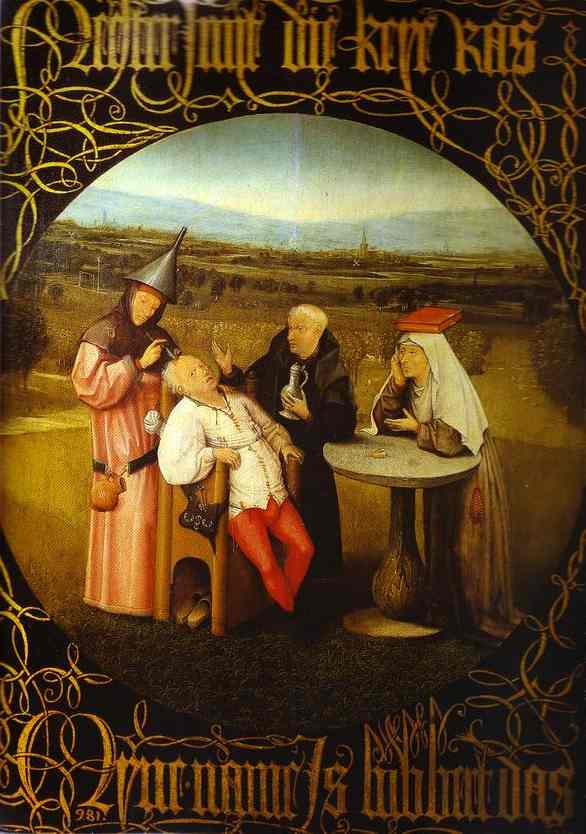
Removing "stones" from the head was a fairly common medieval operation; however, for some reason Bosch has painted a flower as the object being removed.
The Stone Operation. There was an old Dutch saying for a person of odd behavior that he had 'a stone in the head'. Trading on credulity of simple people, charlatans would offer to extract stones. They always found patients among those with headaches. The 'surgeon' would then tie his patient safely to a bench, make a small cut and under cries, moans and groans of the victim produce a pebble or two covered with blood. These 'surgeons' were a popular object of satire in the 17th century.
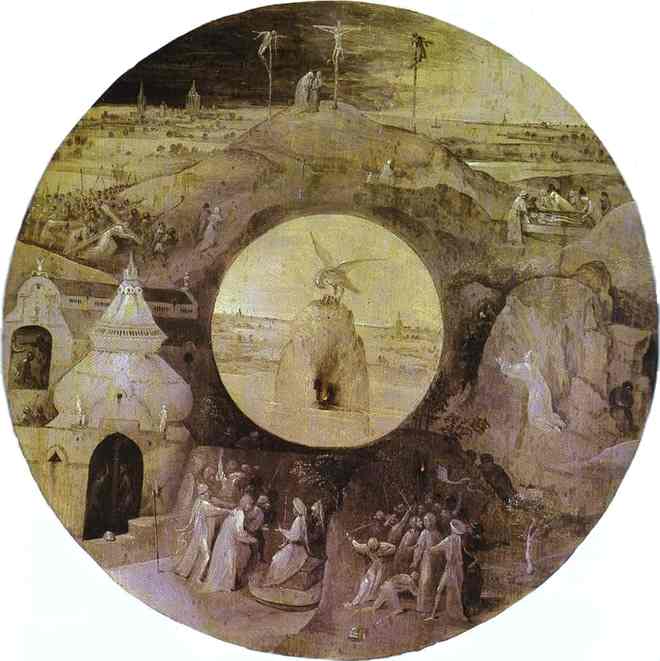
The Seven Deadly Sins is a painted rectangle with a central image of the eye of God, with Christ watching the world. The Seven Deadly Sins, depicted through scenes of worldly transgression, are arranged around the circular shape. The circular layout with god in the centre represents gods all seeing eye No sin goes unnoticed. In the corners of the image appear the "Four Last Things" mentioned in late medieval spiritual handbooks: Deathbed, the Last Judgment, Heaven, and Hell, all of which are favorite themes of separate Bosch panels.
Bosch's belief in the pervasive evil of the world colored his paintings of more conventional religious subjects; the stories of Christ and the saints became images of torment by demons or mobs of mocking humans. Typical of these interpretations are the numerous images from Christ's passion, such as the half-length Crowning with Thorns, or Christ Being Shown to the People (c.1485; National Gallery, London). A representative image of this type is the view, also half-length, of Christ Carrying the Cross (c.1490; Museum of Fine Arts, Ghent), in which a crowd of grotesque faces seems to swallow up the face of the suffering Christ.
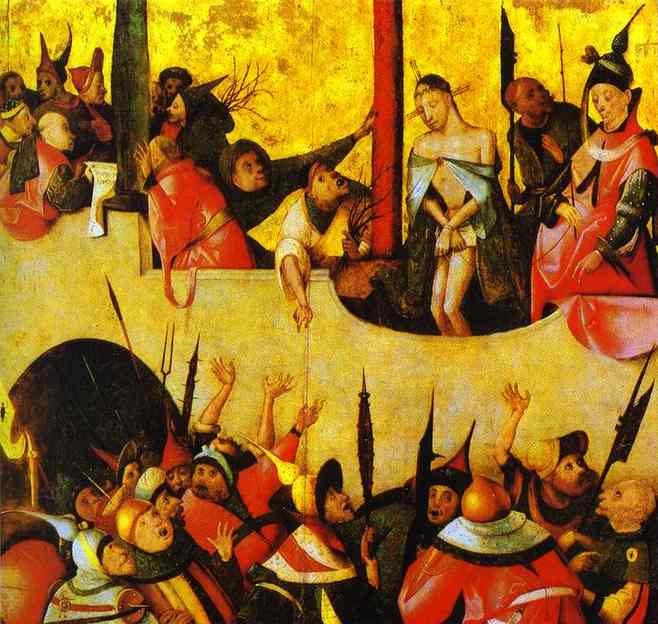
을 쓴 예수를 가리키며 유대인에게 한 말; 요한 복음 ⅪⅩ: 5); 가시 면류관을 쓴 예수의 초상화
Paradise and Hell
c. 1510 (170 Kb); Left and right panels of a triptych: oil on wood, Each panel 135 x 45 cm (53 1/4 x 17 3/4 in); Prado, Madrid
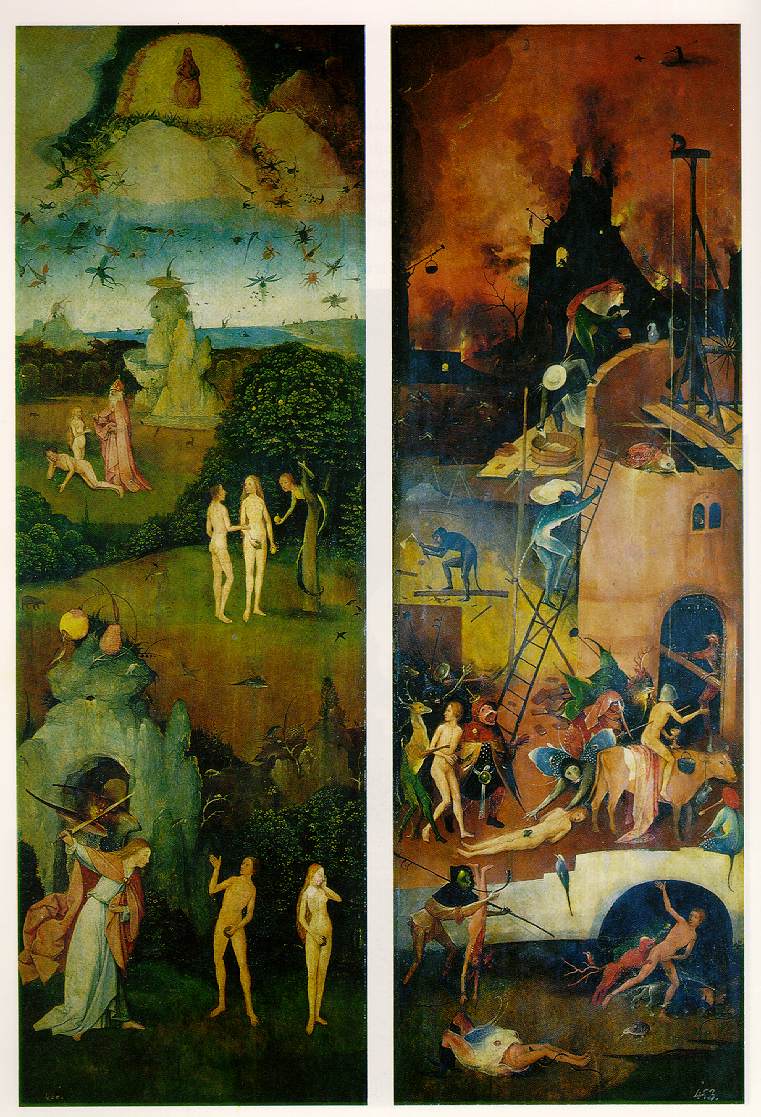
Dante Alighieri (1265-1321)의 신곡 이 천국과 지옥을 글로 쓴 것이라면,
보쉬는 그것을 그림으로 그림 최초의 화가였다.
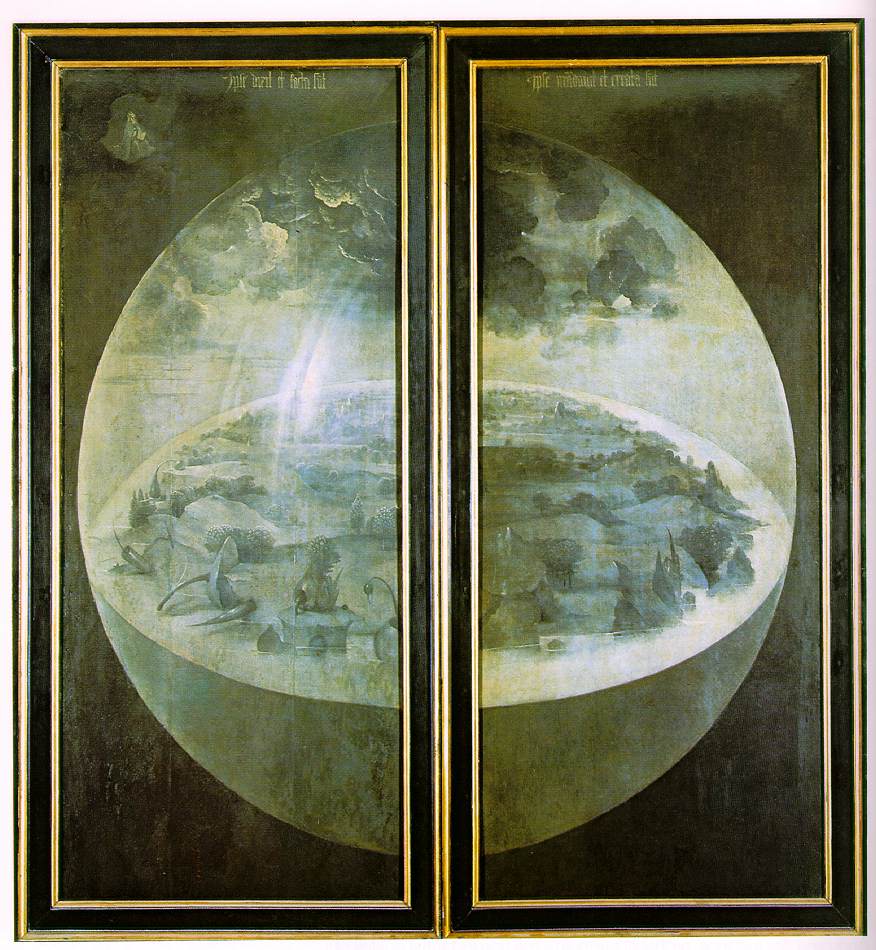
Outer wings (shutters), depicting the third day of creation (140 Kb)
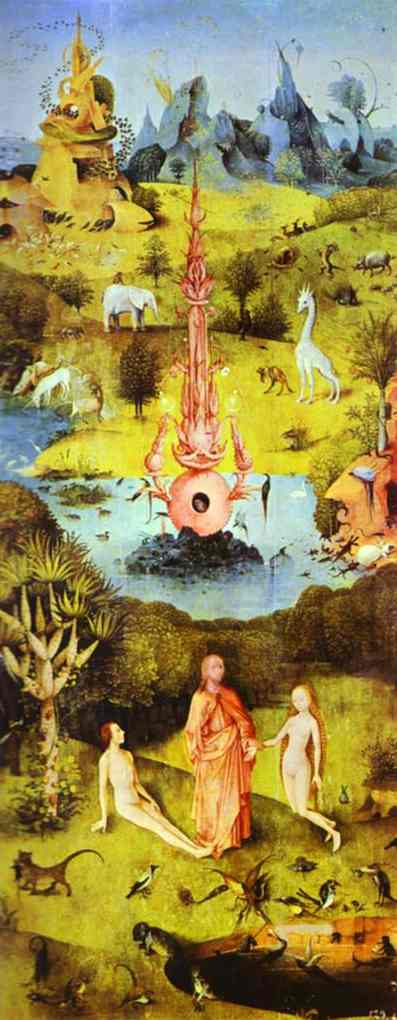
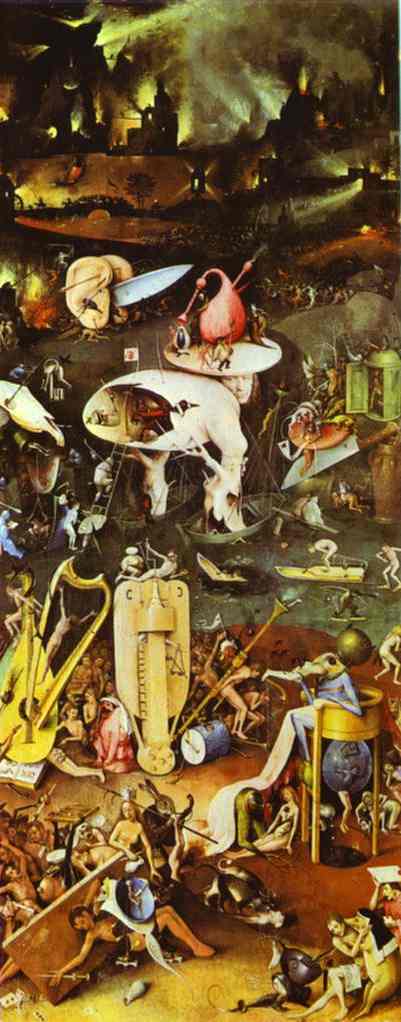
Bosch's most famous and unconventional picture is The Garden of Earthly Delights (c.1500; Prado, Madrid) which, like most of his other ambitious works, is a large, 3-part altarpiece, called a triptych. This painting was probably made for the private enjoyment of a noble family. It is named for the luscious garden in the central panel, which is filled with cavorting nudes and giant birds and fruit. The triptych depicts the history of the world and the progression of sin. Beginning on the outside shutters with the creation of the world, the story progresses from Adam and Eve and original sin on the left panel to the torments of hell, a dark, icy, yet fiery nightmarish vision, on the right. The Garden of Delights in the center illustrates a world deeply engaged in sinful pleasures.
In reference to astrological alignments at the time this was painted, a lot of the instruments of torture are also musical instruments.
'History of Arts > Renaissance' 카테고리의 다른 글
| Giuseppe Arcimboldo(1527-1593) 프라하... (1) | 2020.05.26 |
|---|---|
| 르네상스전성기 : Raphael라파엘로 (0) | 2020.05.18 |
| Titian (0) | 2020.05.18 |
| 북유럽르네상스-Dürer, Albrecht (1) | 2020.05.18 |
| 르네상스 초기-얀 반 아이크 (0) | 2020.05.11 |

